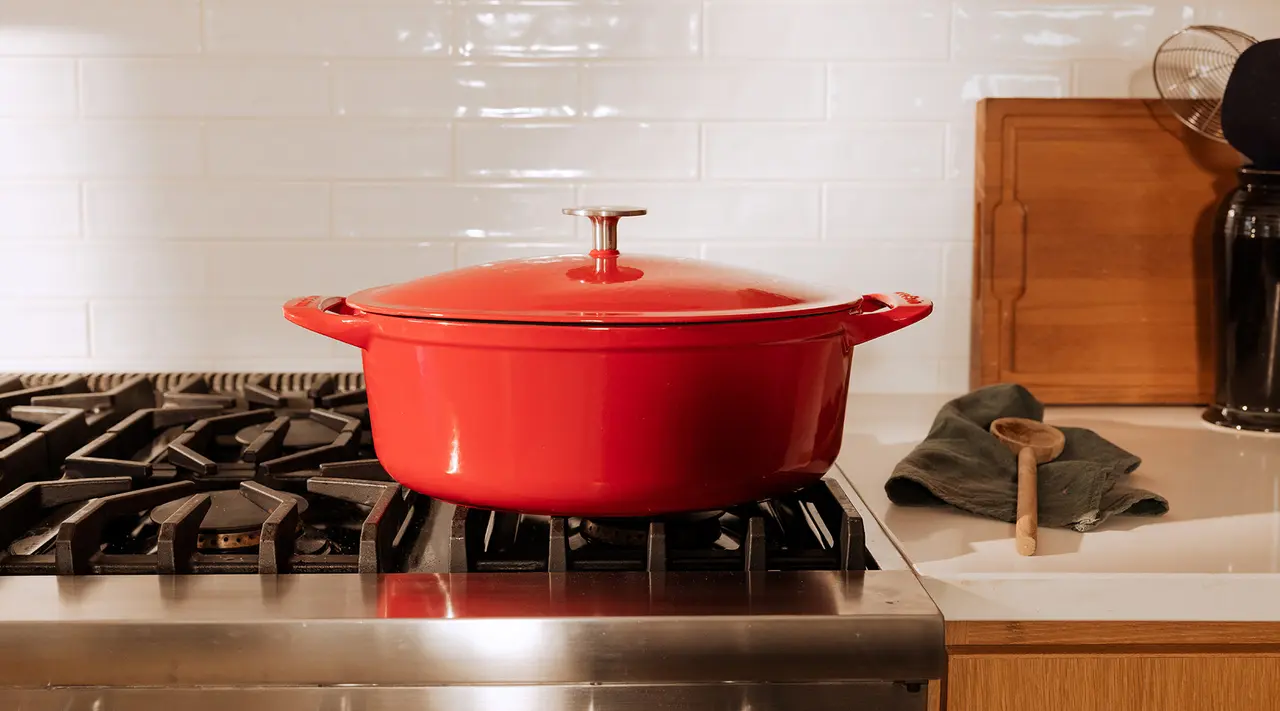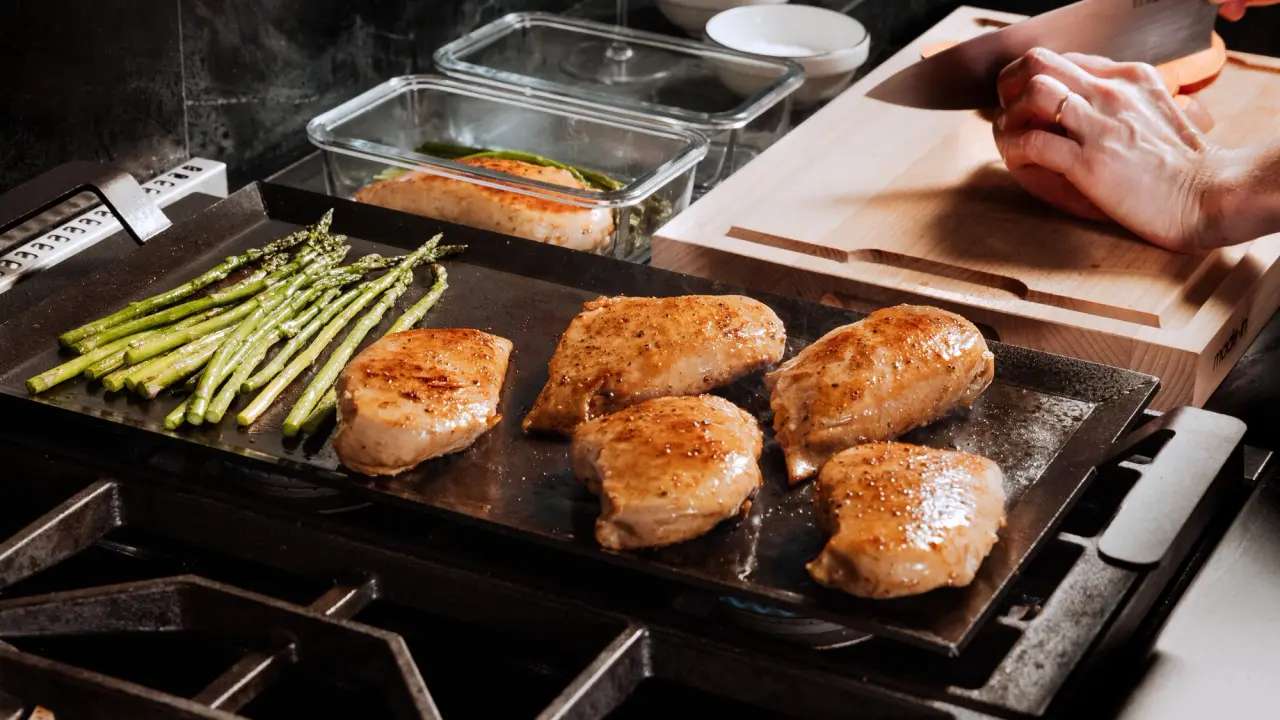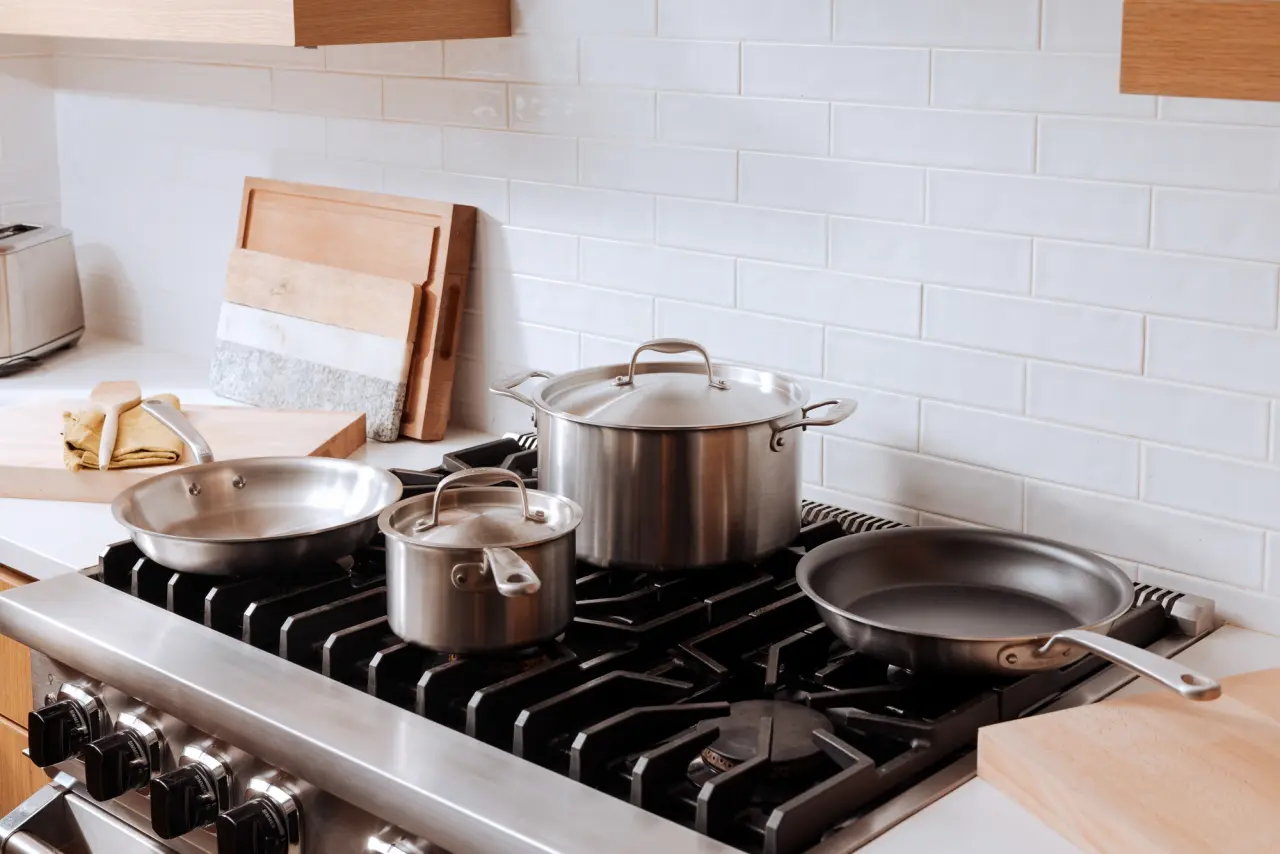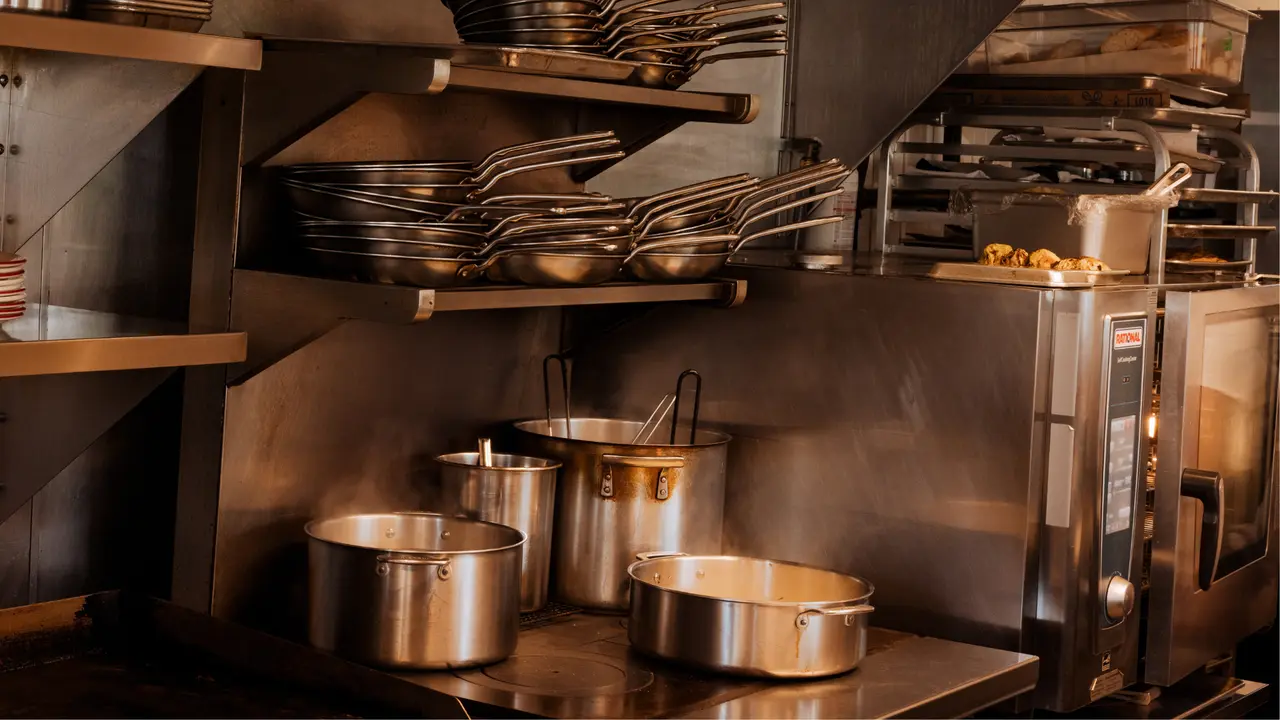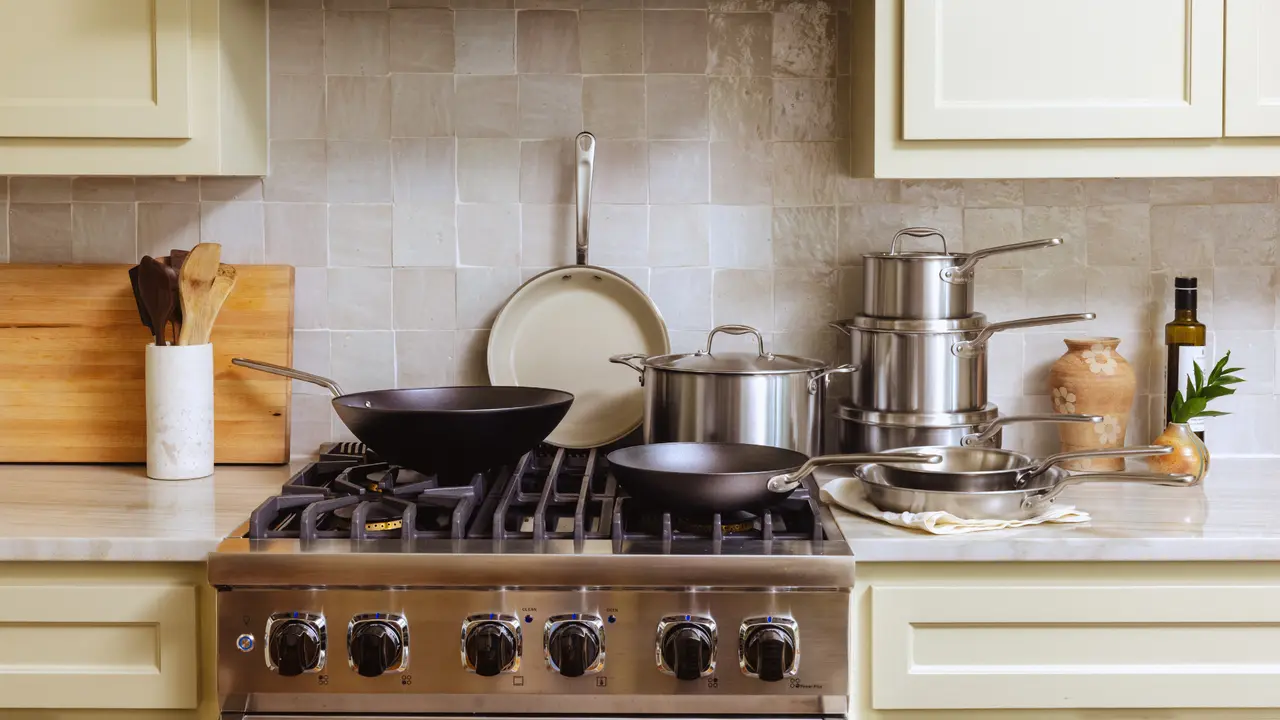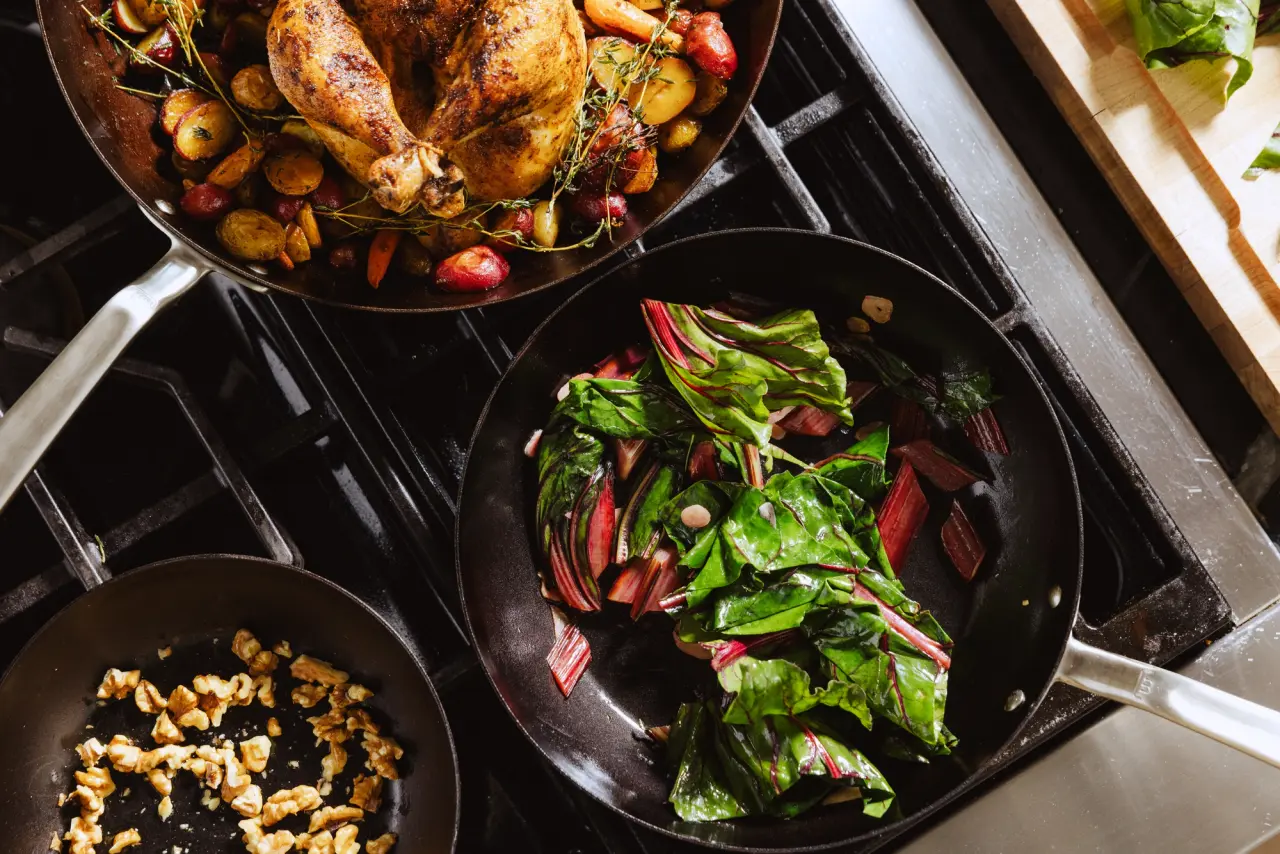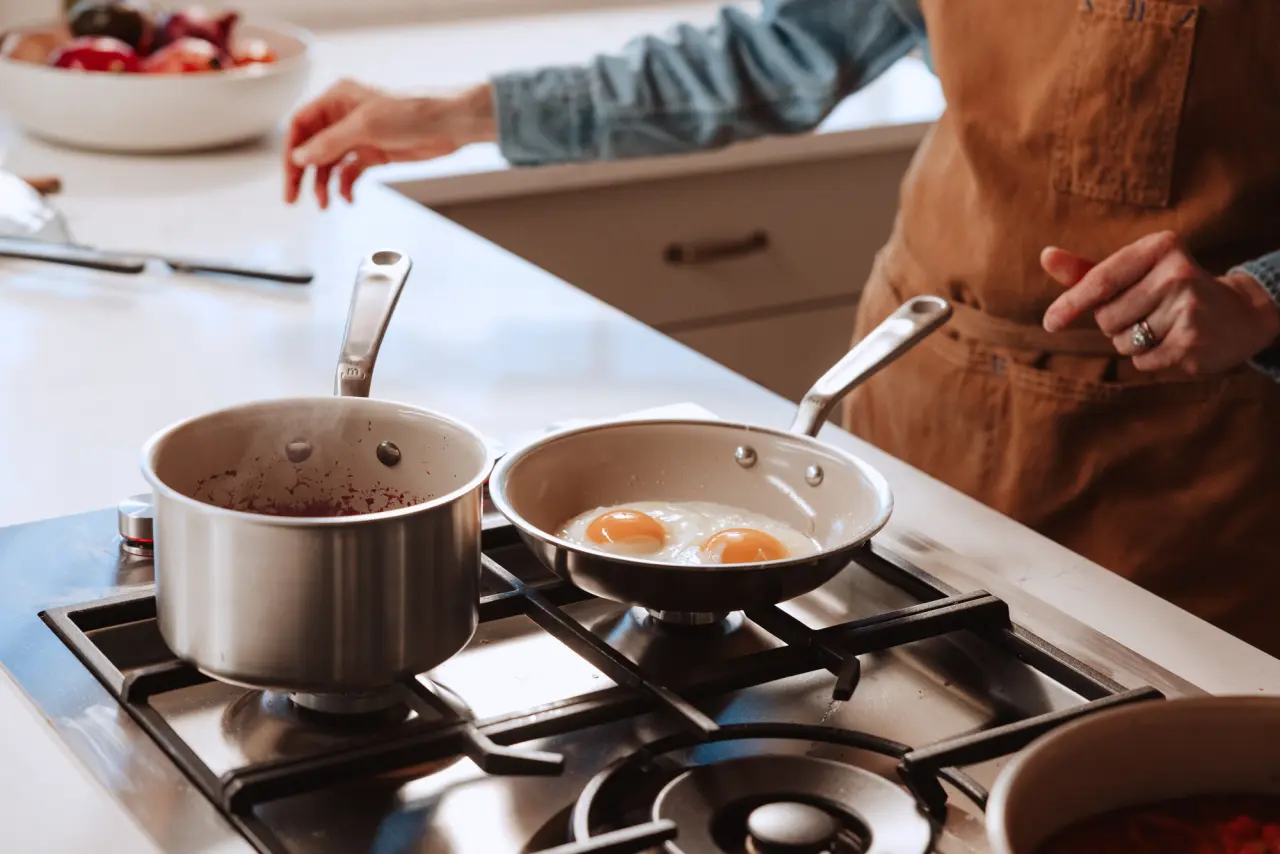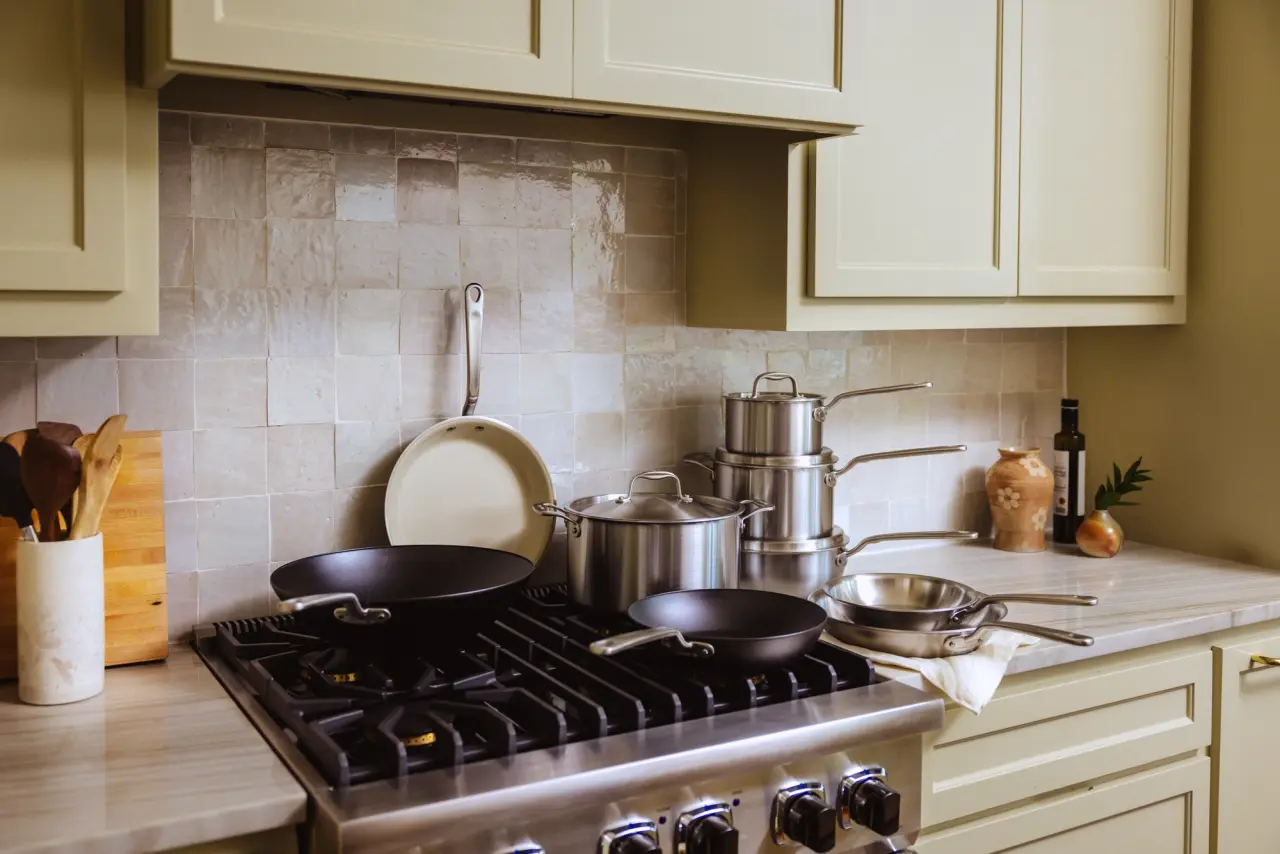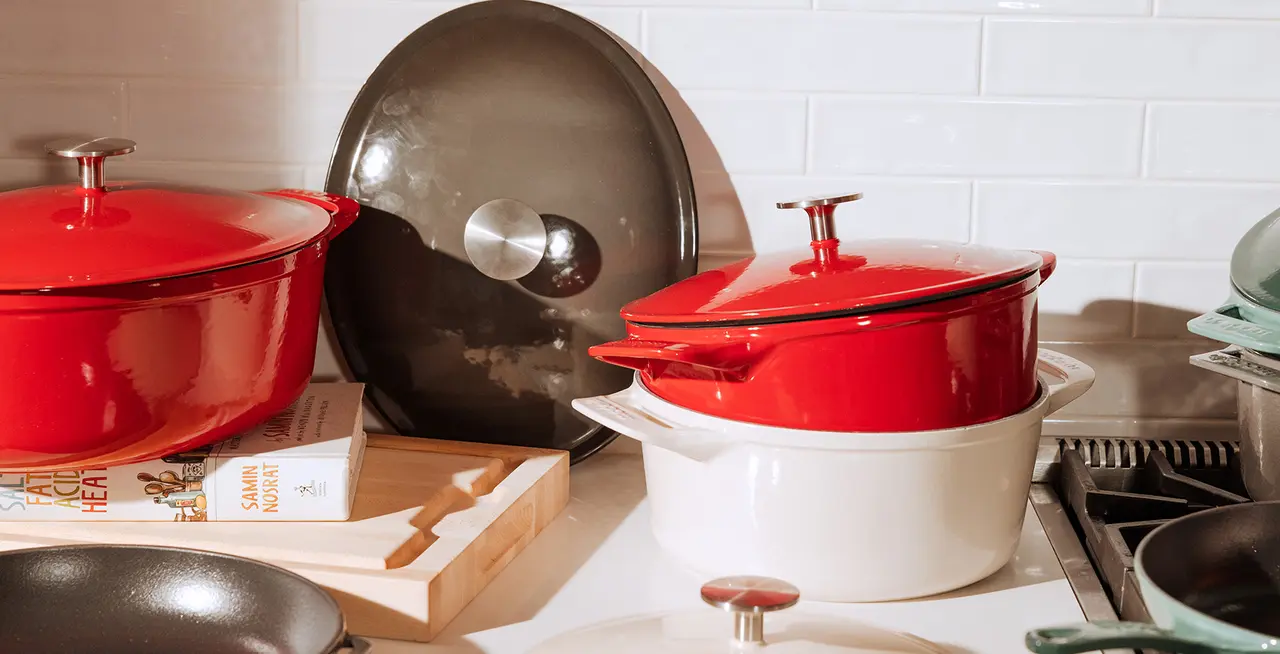We are all about versatility in the kitchen, and that’s especially true with cookware. If you’re looking for a large, all purpose pot, you might be deciding between a stock pot versus a Dutch oven. Both prove excellent for large-format dishes like soups, stews, pots of beans, and yes, stocks and broths.
But as you’ll learn below, there are a few key differences to know before deciding which pot is best for you and your kitchen. (Hint: the answer may very well be both.)
Stock Pot Overview
Stock pots are characterized by their tall, straight sides, large capacity, two helper handles on the sides, and, typically, stainless steel construction. In professional kitchens you’ll find stock pots large enough to hold a small child; for the home kitchen, a stock pot will be between 8 and 12 quarts.
With its tall sides and large volume, a stock pot can easily make big batches of soups and broths, as well as grains, legumes and pasta (made especially easy with a pasta insert), plus all manner of boiled items like potatoes, corn on the cob, and shellfish. If you’re looking to throw a crawfish boil, for example, a stock pot will be your ticket to success.
Dutch Oven Overview
Made from cast iron and, in our case, protected by a layer of enamel, a Dutch oven is a heavy, large pot that you can also use for soups, legumes, and vegetables, but that is especially well suited for braising and other "low and slow" cooking styles.
The cast iron core means a Dutch oven holds heat exceptionally well, and our unique Cloud Cover Lid features pea-sized dimples which trap steam and keep moisture in your food. The enamel coating protects the pot from rust (and also means you don’t need to season it like with unfinished cast iron) while also being virtually non stick.
What are the Key Differences?
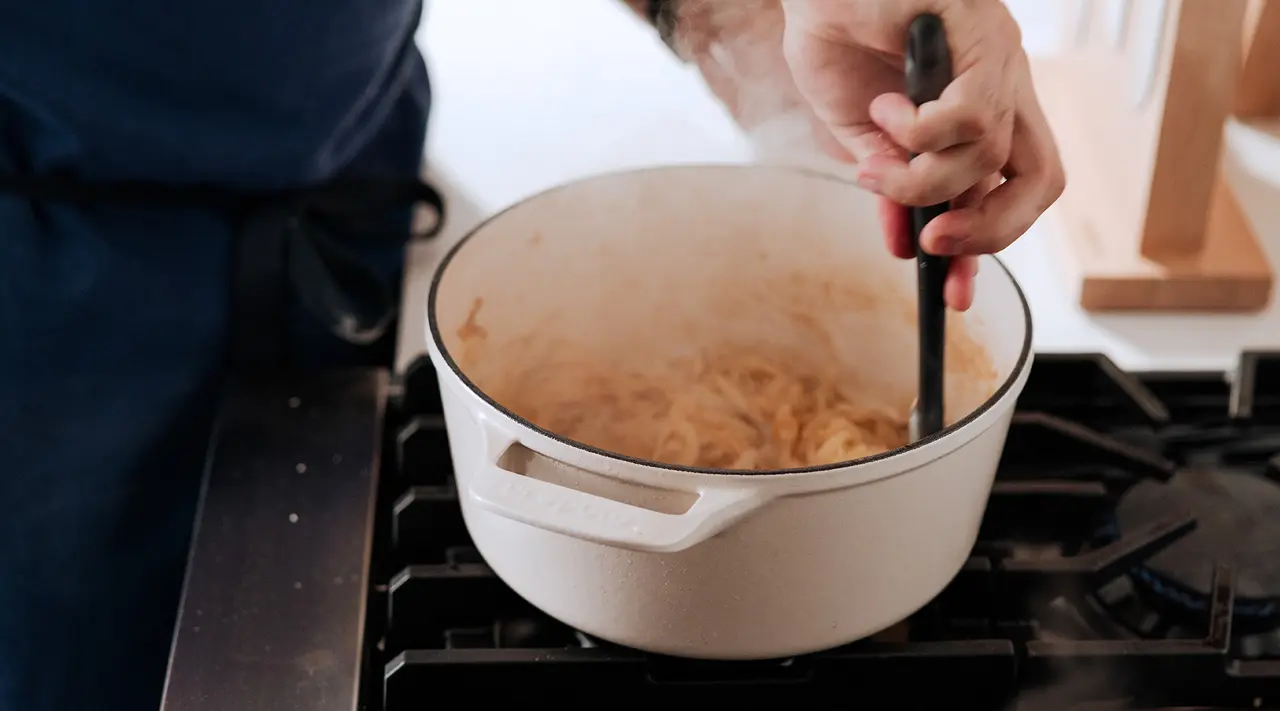
While they can make similar foods, there are a few big differences between a stock pot versus a Dutch oven.
Design
The biggest difference between a stock pot and a Dutch oven is the material used to make them. Our Stock Pots, made in Italy from five layers of metal, provide quick heat conductivity and even heat distribution (meaning no worrying about hot spots). Each stock pot comes with a tight-fitting lid, too.
Our Dutch Ovens, on the other hand, come from Northeast France, where artisans pour professional-grade cast iron as they have since the early 1920s. Both our Stock Pots and Dutch Ovens are extremely durable, heirloom-quality pieces.
Their build also affects their look: Stock pots tend to be taller and narrower compared to Dutch ovens, and Dutch ovens can also be round or oval. A stainless steel stock pot can be attractive in a shiny, minimalist, utilitarian way, while a Dutch oven gives you an opportunity to express your style with multiple color options.
Weight
These two pots are in different weight classes. Stock pots, regardless of the material, will typically be lighter than an enameled cast iron Dutch oven—especially once it’s filled with food. For example: our 5.5 QT Round Enameled Cast Iron Dutch Oven clocks in at just under 14 pounds, while our 6 QT Stainless Clad Stock Pot weighs a mere 3.5 pounds.
Cooking Applications
While both pots can do the same thing, their construction means they each excel in unique cooking applications. The thinner material used to make stock pots means liquids come to a boil faster, so a batch of pasta or chicken broth will cook quicker. Our Stainless Clad can also withstand higher sustained temperatures (800F) than our Dutch Oven (580F), which is overall better suited for low and slow cooking methods.
This means that a Dutch oven is your ticket for braises, since its cast iron core retains and evenly distributes heat. It can also easily go from the oven to the stove. A stock pot made of oven-safe materials can go in the oven, but its typically tall sides may make that a potentially awkward fit, so it’s better left on the stove top.
Size and Capacity
Our Stock Pots are available in 6 quarts, 8 quarts, and 12 quarts. For most home cooks, an 8 Quart Stock Pot will prove the perfect size—its large cooking surface allows for easy searing, while the tall sides provide plenty of volume for pastas and stocks. An 8 Quart Stock Pot will make eight to twelve servings of soup, boil up to two boxes of pasta, and make a nice batch of homemade stock. If you cook for a large family, though, consider the 12 Quart option. And if you cook for just one or two people, then a 6 Quart Stock Pot might be the right choice for you.
Similarly, Dutch ovens come in a range of sizes: small (1, 2, and 3.5 quarts), medium (5.5 and 6 quarts), and large (7+ quarts). A small Dutch oven is best if you live alone or with one person and typically cook 1 to 2 servings of food at a time. The most popular option, the 5.5 quart, can serve between 4 and 6 people while also providing plenty of cooking surface for braises and sautés.
The ever impressive large Dutch ovens, like our 7.5 QT Oval option, are best for large families and large portions—or just a big roast chicken. The 5.5 QT Dutch Oven is our recommendation for those just beginning their enameled cast iron collection.
Either way, when it comes to choosing the right size, it’s better to err on the larger side than picking a pot that is too small to cook effectively. As you add to your collection, you can always size up or down depending on what you find works best for your cooking style and space.
Do You Need Both?
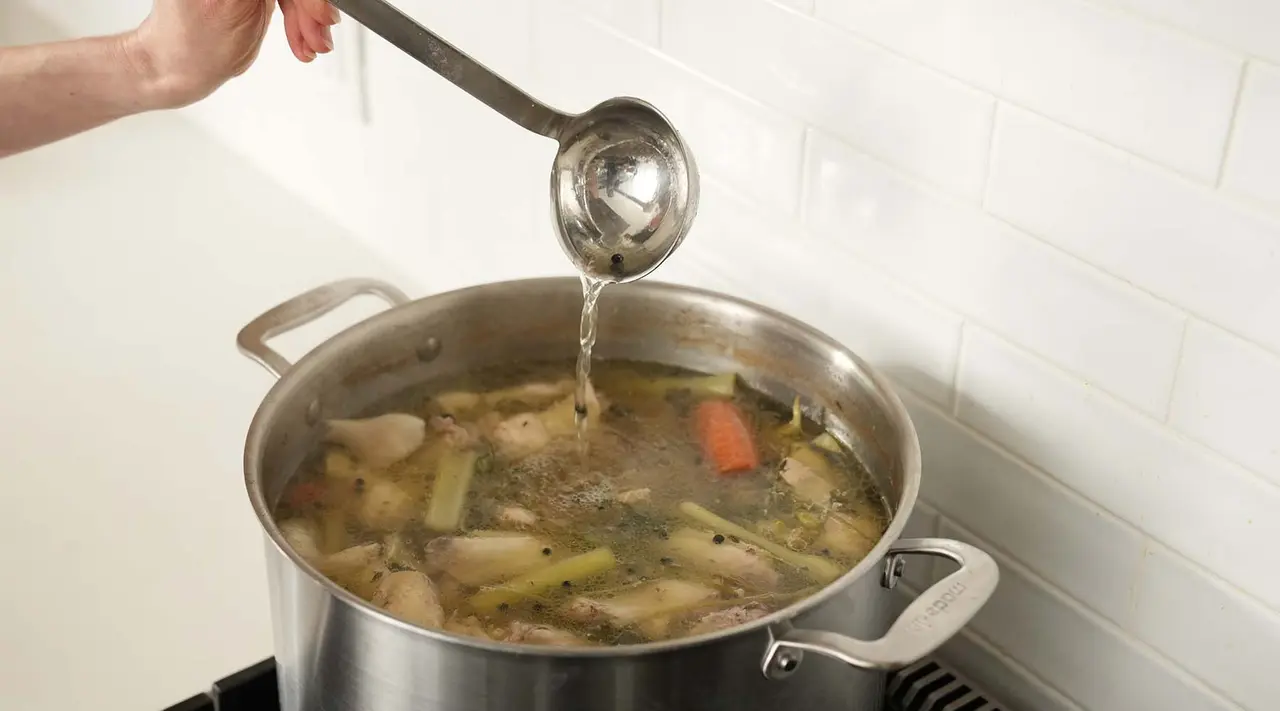
You can use either a stock pot or a Dutch oven for the same things—especially if your space or budget is tight. However, each is better suited for certain tasks, and if you choose both, you’ll find yourself reaching for one over the other depending on what you’re cooking.
Ultimately, we do recommend having both a stock pot and a Dutch oven on hand. While you can technically boil water in a Dutch oven or braise in a stock pot, it’s easier (not to mention faster) to do these techniques in the tools they’re designed to be done in.
Ready to Shop?
As you’ve learned, both a stock pot and a Dutch oven will prove versatile in your kitchen. Whether you choose one or both, browse our Stainless Clad and Enameled Cast Iron collections to discover all your options.
